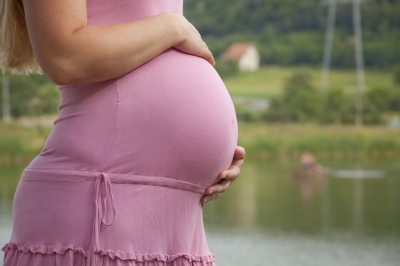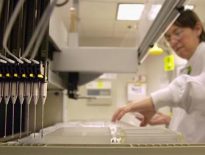One of the distressing reasons that a woman might feel pregnant but have repeated negative tests is that the pregnancy is ectopic. From the Greek ektopos, literally ‘out of place’, it occurs when the fertilized ovum takes too long to travel down the Fallopian tube and on the seventh day, instead of reaching the uterus and implanting itself there, it embeds itself in the fallopian tube instead. Occasionally it implants in the ovary itself or, even more rarely, in the abdomen or cervix. Ectopic pregnancy was first described in ad 936, and operated on successfully in 1759.

Because hormone levels are lower with an ectopic pregnancy, pregnancy tests are less likely to prove positive. Sufferers are also marginally less likely to experience the nausea associated with early pregnancy. On the other hand enlarged breasts, slight spotting of very dark blood, low abdominal cramping possibly on one side, dizziness or shoulder-tip pain are all warning signs. Medical help should be sought immediately since a rupture of the tube can be life-threatening or dangerous to future fertility.
Ectopic pregnancy is on the increase: in northern Europe the rate of ectopic pregnancies rose from 11.2 to 18.8 per 1,000 pregnancies between 1976 and 1993, while in the USA the number of admissions to hospital for ectopic pregnancy rose from 17,800 in 1970 to 88,400 in 1989. In the UK, the number of ectopic pregnancies is static at about 11,000 cases a year, but the number of related deaths has risen from three deaths per year in 1991 to four per year in 2004.
A number of factors are linked with an increased probability of ectopic pregnancy: having suffered from pelvic inflammatory disease or having a history of excessive abnormal vaginal discharge; previous pelvic infection following either miscarriage, abortion or childbirth; any kind of tubal surgery or reversal of sterilization; previous ectopic pregnancy; infertility treatment; and major abdominal surgery such as an appendectomy.
In 1989, an American case control study was published showing that women who reported smoking during pregnancy were found to have more than double the risk of ectopic pregnancy. Another more recent study found that women’s risk of ectopic pregnancy rose according to how many cigarettes per day they smoked.
If detected early enough, non-surgical treatments for ectopic pregnancy offer a 70 to 80 percent chance of a woman conceiving again normally. Many women now have an intramuscular injection of a drug called methotrexate rather than surgery. Fifteen percent of women need more than one dose. Methotrexate devitalises the cells surrounding the embryo, causing it and its sac to wither within four to five days then disappear altogether over a period of four to six weeks.
The treatment is successful in more than 90 per cent of cases, but one woman in a hundred will need additional surgery. In cases where the ectopic pregnancy is not diagnosed quickly enough and irreversible damage has been sustained, the fallopian tube itself might also need to be removed. Sixty five per cent of women go on to conceive again following an ectopic pregnancy, regardless of whether they have lost a fallopian tube or not.
Author Bio
Carrie is a mother, breastfeeding counselor and blogger who enjoys writing on baby care topics including nursing challenges, weaning and natural health for children. She currently writes for Mommy Edition.





